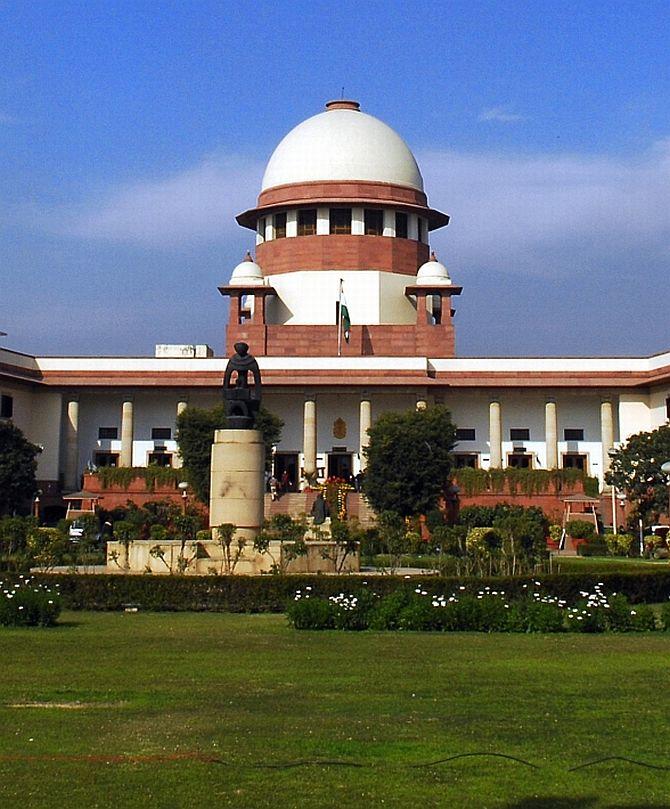 There are 18 judges per 10 lakh people as compared to 50 judges recommended by the Law Commission in its 1987 report which the Chief Justice of India had recently cited seeking an increase in the judges strength.
There are 18 judges per 10 lakh people as compared to 50 judges recommended by the Law Commission in its 1987 report which the Chief Justice of India had recently cited seeking an increase in the judges strength.
According to the data put out by the law ministry in public domain, the judge to population ratio in India stands at 17.86 judges per 10 lakh people.
Mizoram has the highest judge to population ratio which stands at 57.74. In Delhi, it stands at 47.33, while in Uttar Pradesh, the most populous state of the country, the ratio is 10.54 judges per 10 lakh people.
West Bengal has the lowest judge to population ratio at 10.45 judges per 10 lakh people.
The sanctioned strength of the Supreme Court today stands at 31 judges, including the CJI as compared to 25 in 2009.
The apex court faces a shortage of 3 judges. Four new judges were recently appointed to the apex court.
The sanctioned strength of the high courts till 2014 was 906 judges and it was increased to 1,079 in June this year.
There are 24 high courts in the country.
But despite the increase in the sanctioned strength, the high court, as in July this year, faced a shortage of 477 judges.
The subordinate courts in the country, the backbone of justice delivery system, have a sanctioned strength of 20,502.
But there are only 16,070 judicial officers serving in the courts and the shortage stood at 4,432 as on December 31, 2015.
Addressing the inaugural session of Joint Conference of Chief Ministers and Chief Justices of High Courts in New Delhi in April, CJI T S Thakur had said since 1987, when the Law Commission had recommended an increase in the number of judges from then 10 judges per 10 lakh people to 50, "nothing has moved".
Justice Thakur had said following the Law Commission's recommendation, the Supreme Court in 2002 had also supported increasing the strength of the judiciary. A Parliamentary Department Related Standing Committee on Law, then headed by Pranab Mukherjee, had also recommended taking the ratio to 50 from 10.
On July 28, the government had informed the Lok Sabha that the Law Commission has reviewed the criteria of judge-population ratio for determining the number of judges needed which the Chief Justice of India had cited to say that India needed 50 judges per million people.
Minister of State for Law P P Chaudhary had said in a written response that the criteria of the judge-population ratio for determining the adequacy of the judge strength in the country has been reviewed by the Law Commission in its 245th report (submitted in 2014) prepared on the directions of the Supreme Court.
The apex court had asked the law panel to evolve a method for scientific assessment of the number of additional courts to clear the backlog of cases.
"In the 245th report, the Law Commission has observed that filing of cases per capita varies substantially across geographic units as filings are associated with economic and social conditions of population. As such, the Commission did not consider the judge-population ratio to be a scientific criterion for determining the adequacy of the judge strength in the country," the minister said.
The Commission had found that in the absence of complete and scientific approach to data collection across various high courts, the 'rate of disposal' method to calculate the number of additional judges required to clear the backlog as well as to ensure that the new backlog is not created, is more pragmatic and useful, Chaudhary had said.









